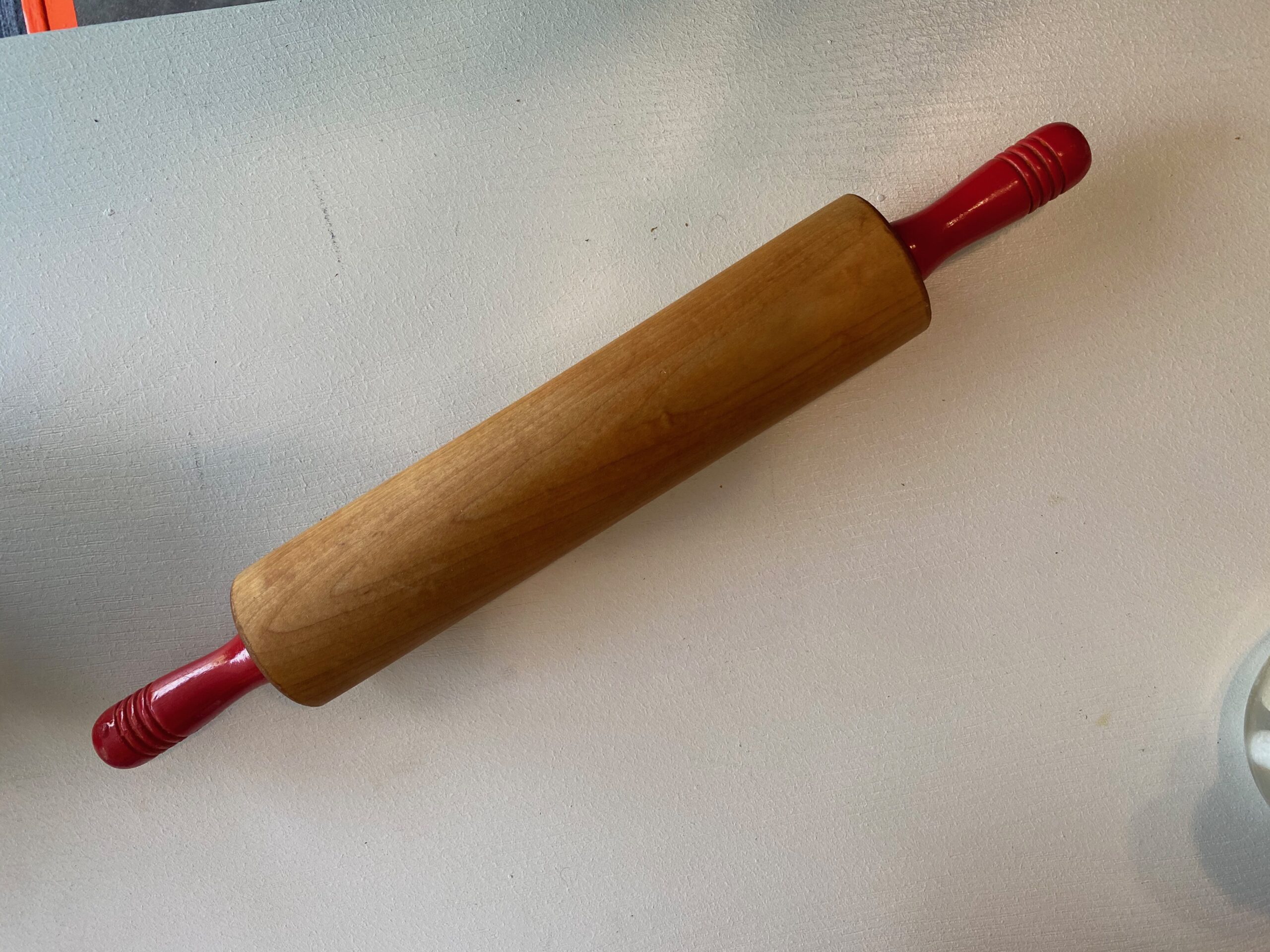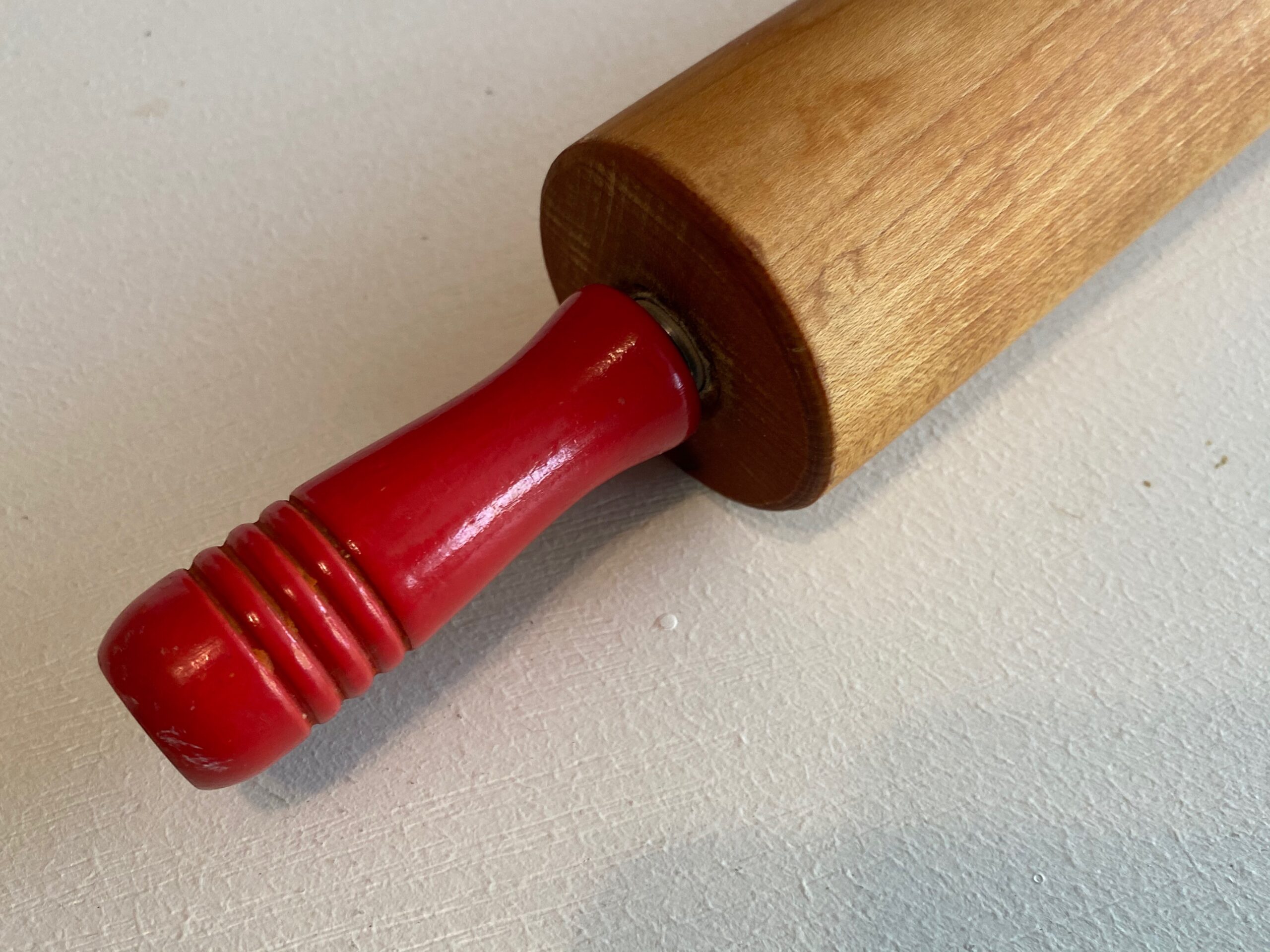Who has one of these lurking in their kitchen drawer? Toss it! Vintage rolling pin with red handles: 7,941 ppm Lead (90 ppm is unsafe)
For those new to the Lead Safe Mama website:
Tamara Rubin is a multiple-federal-award-winning independent advocate for childhood Lead poisoning prevention and consumer goods safety, and a documentary filmmaker. She is also a mother of Lead-poisoned children (two of her four sons were acutely Lead-poisoned in 2005).
- Tamara owns and runs Lead Safe Mama, LLC — a unique community collaborative woman-owned small business for childhood Lead poisoning prevention and consumer goods safety.
- Since 2009, Tamara has been conducting XRF testing (a scientific testing method) using the exact instrumentation employed by the U.S. Consumer Product Safety Commission to test consumer goods for toxicants (specifically heavy metals — including Lead, Cadmium, Mercury, Antimony, and Arsenic).
- Since July of 2022, the work of Lead Safe Mama, LLC has been responsible for 5 product recalls (FDA and CPSC).
- All test results reported on this website are science-based, accurate, and replicable.
- Items that Lead Safe Mama, LLC reports on are tested multiple times to confirm the results published (for each component tested).
- Recent notable press… There has been too much to mention already in 2024! Please check out our press page to see some of the amazing coverage of our work so far this year!
Here’s another example of why using things from grandma’s kitchen might not be the best idea!
Vintage wooden items that have ANY paint on them should be regarded as suspect! This is especially true of vintage wooden items intended for food-use in the kitchen. As it turns out (not unexpected at all), this vintage/ antique wood rolling pin with red painted handles (pictured here in the post — just like the one your grandmother used to use, right?) is painted with LEAD PAINT!
Why is this a problem?
Think about how you use a rolling pin… you touch the handles to roll the dough… touch the handles again before you flip the dough… flip the dough… repeat. There is definite potential for Lead contaminating your food from an item like this (using it normally/ as intended). If you have one of these (from your grandma, from an antique shop, or otherwise), PLEASE consider discontinuing for food-use and PLEASE consider throwing it in the trash — so no one in the future ever uses it for food purposes, either! (For those who may be curious, the rolling pins I use when I cook in my home are the modern stone/ marble type with wooden handles — like the one at this link: https://amzn.to/31hHf1L, and a plain/ unfinished, one-piece solid hardwood one (similar to this design): https://www.thegrommet.com/products/vermont-rolling-pins-shaker-rolling-pin?gclid=EAIaIQobChMI2ovijK2t6wIVOx-tBh3XKgwBEAQYAiABEgIKpfD_BwE#Material=Maple
How much Lead is “too much” Lead?
Newly-manufactured items made today are considered unsafe for children to use if they are finished with any paint or coating that is 90 ppm Lead or higher. The federal government considers any Lead paint on a house to be extremely dangerous at 5,000 ppm Lead and higher (and if a hazard inspector gets a reading that high, the owner may be eligible for federal funds for intervention and clean-up). Accordingly — from any conceivable perspective — 7,941 ppm Lead on the painted handle of a food-use rolling pin is WAAAAY TOO MUCH Lead!
Here are the exact XRF readings for the handles of the item pictured:
- Lead (Pb): 7,941 +/- 264 ppm
- Cadmium (Cd): 23 +/- 7 ppm
- Mercury (Hg): Non-Detect
- Barium (Ba): 98 +/- 43 ppm
- Chromium (Cr): 4,719 +/- 743 ppm
- Antimony (Sb): Non-Detect
- Selenium (Se): Non-Detect
- Silver (Ag): 12 +/- 5 ppm
As always, thank you for reading and sharing this work. Please let me know if you have any questions and I will do my best to answer them personally.
Tamara Rubin
#LeadSafeMama
Amazon links are affiliate links. If you purchase something after clicking on one of our links, Lead Safe Mama, LLC may receive a small percentage of what you spend at no extra cost to you.
Never Miss an Important Article Again!
Join our Email List












Oh oh. 🙁
Thank you for your post! Do you happen to know if there is lead in the Fletchers’ Mill Classic Rolling Pin with Seafoam handles?
https://www.amazon.com/Fletchers-Mill-Rolling-Handles-Seafoam/dp/B016HVC81E/
Hi Jenny,
My readers direct the things I test by sending me things for testing. I am sorry but I am not accepting new items for testing at this time, but if you subscribe to my newsletter (it’s free) you will be among the first to know when I start testing things again.
Tamara
Thanks. I just found the red handled rolling pin my mother in law used. It is going to the dump.
This was sad to see, as so many holiday baking memories tied up in my mother’s identical red-handled _child _sized rolling pin. Week before I saw this, bought one at Sur la Table (only brick and mortar cooking gear store around here- and _now that I know your opinion of them, I wonder).
Wondering about contemporary versions. Any ideas?
Don’t throw it away! It’s vintage!!! Use for decoration or sell it to someone who would enjoy it! You don’t have to use it but why throw it away!?!? That’s sad!!
Unfortunately the problem is that someone in a future generation might use it for food-use purposes, which could poison them – given it is Lead paint on wood. Bran damage to young children is a lot more sad than throwing away something toxic. This is a particularly significant concern (these lead-painted wooden rolling pins.) You can read more about my thoughts on this here: https://tamararubin.com/2019/12/what-should-i-do-with-my-lead-contaminated-dishes-to-toss-or-not-to-toss/
Tamara
Lead test strips are very inexpensive and available at all hardware stores for testing painted surfaces. If you have a keepsake it would be foolish to throw it out without confirming the paint contains lead. Good memories aren’t as easy to come by as they used to be.